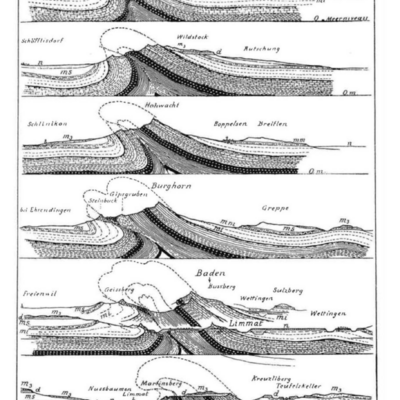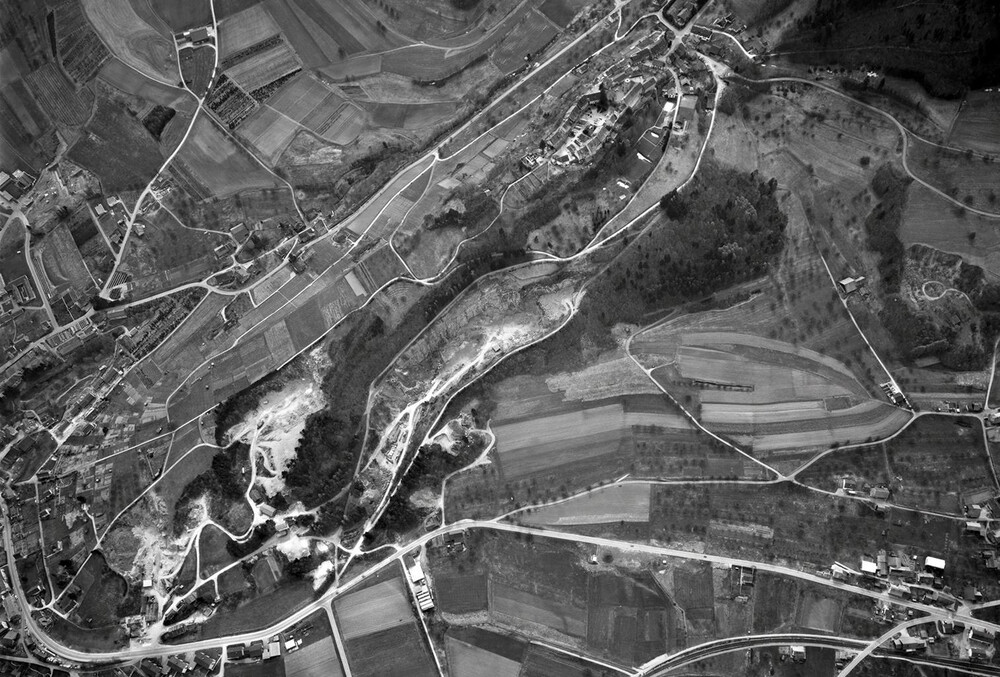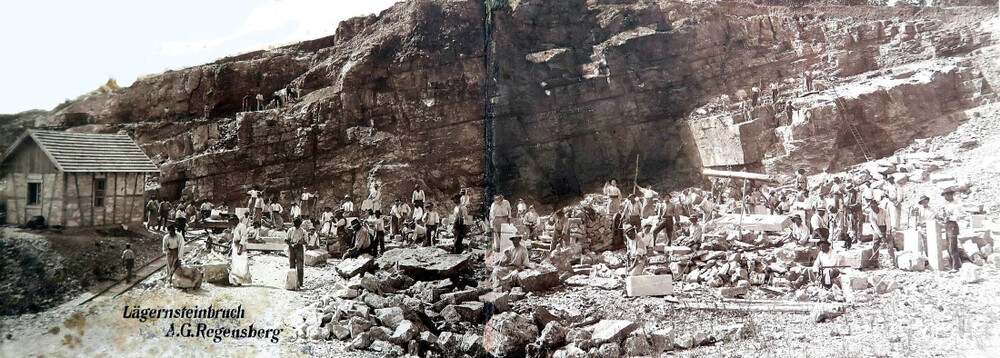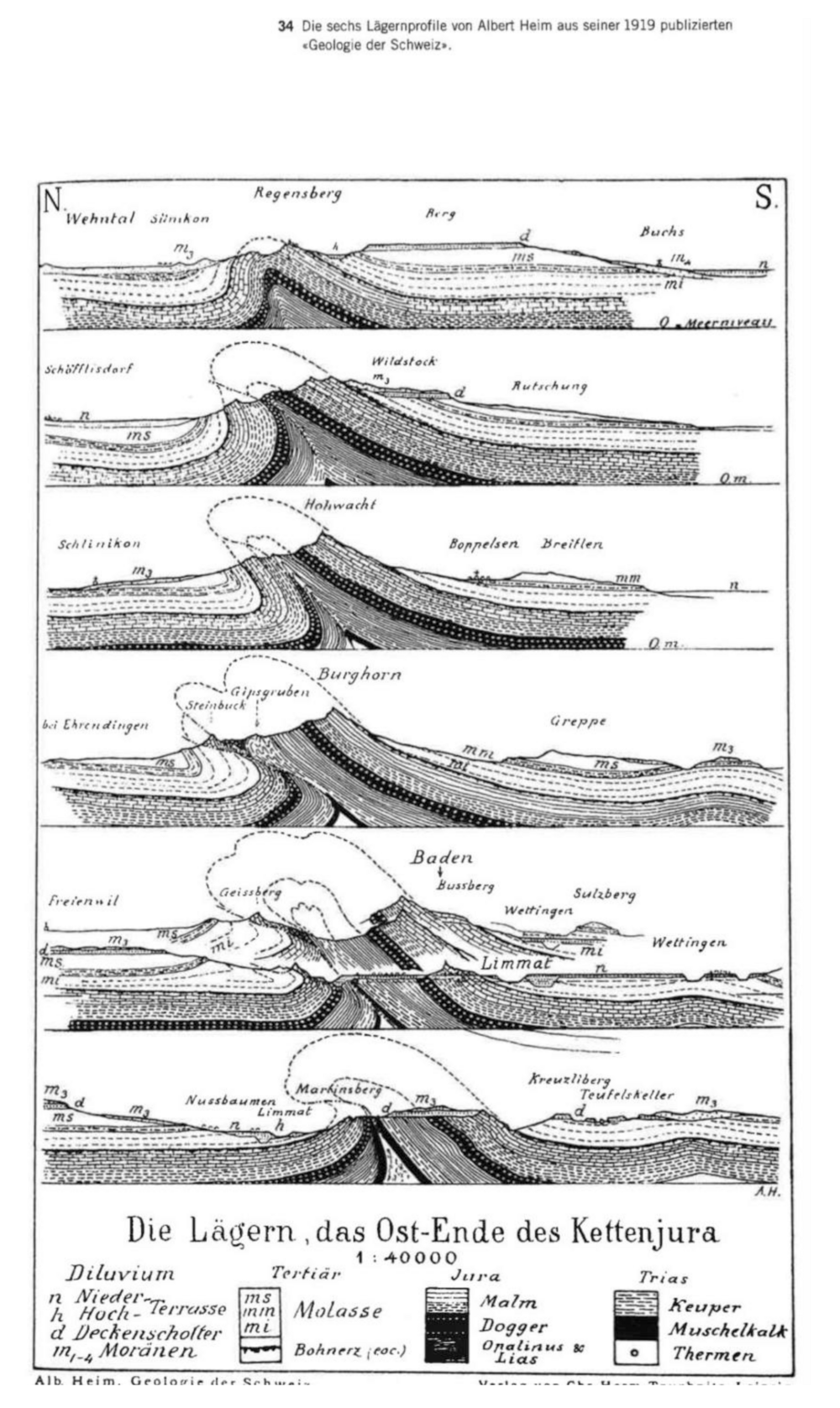
HS23 Foundation Studio I: The Garden of the XXI Century: Lägern Quarry
The garden of the XXI century
Introduction, Foundation Studio I
Lägern Quarry: limestone extraction at the tip of the Jura Mountains
At the northeastern terminus of what’s known as the Faltenjura (Folded Jura), sits the Lägern Kalksteinbrüche, a limestone quarry between Dielsdorf and Steinmaur, just 20 km from Zurich’s urban center. The quarry is integrally linked to the geologic and climatic condition in which it is situated. Geologically, it’s part of the larger system of the calcareous Jura mountains, which stretch 360 km along the border of France and Switzerland between the Rhone and Rhine rivers, before extending north into Germany as the Tafeljura, or Table Jura. The limestone and marl bedrock of the Jura result in a high permeability rate and minimal surface water, and its geologic layers are consistent in depth throughout the Jura range. Climatically, the Jura mountains are the first region in Switzerland to be hit by western weather fronts, often resulting in higher rainfall and frequent thunderstorms. The quarry itself, consisting of exposed stone and little vegetation, is defined by its extreme climate, with very cold winters and hot summers.
One hundred and fifty years of stone extraction has deeply shaped the land surface and water flow of the eastern slope of the Lagern ridge. The six deep quarry sites once produced limestone used to construct much of the canton of Zurich, from the Landesmuseum to the correction of the river Glatt. The limestone of the quarry was also crushed and sold as fertilizer. In 1986 the quarrying operations ended when the Canton banned blasting at the quarry due to noise pollution in the protected neighboring forest. Since 2002, quarries 3-6 have been partially refilled, and ‘renaturalized’ as Magerwiesen; nutrient poor dry meadows without topsoil known for their species-richness. They are commonly constructed in Switzerland due to their high levels of biodiversity. This transformation has been made possible by the use of fill excavated as part of the rapid urbanization in the region surrounding Zurich. Today, as the site is no longer quarried, stone is imported from areas with less-restrictive environmental regulations in southern Germany, processed in former quarry #1, and sold locally. In the act of protecting the local forest and promoting biodiversity in Switzerland, extraction is displaced elsewhere.
The garden of the XXI century: the possibility for transformation latent in all places
Recognizing these contradictions, this studio looks for potentials in the exhausted quarry landscape and the rich relationships enabled by its converging conditions. Rather than cementing these relations into a fixed form, we instead look toward a garden, where simple interventions and practices of management enable collaborations between living systems of plants, animals, soil, water, organisms, climate, geology and humans that can unfold over time. By directing existing flows and energies, a garden has the potential to be in conversation with its larger context. Always unfinished, always in process, the form and performances of the garden emerge from the relations that constitute it.
The garden begins with understanding of climate and geology—their performances, constraints and gifts—as the foundation for learning from the primary matter of the existing landscape. Landscape architects can best understand the particular conditions and possibilities of a place by understanding it as deeply rooted in its context, with its own unique climate, geology and history. To understand this context, we translate the intricate relationships at the intersection of these conditions.
Translation: rigorously drawing what we see and learn
As landscape architects we are translators; through drawing, we translate a complexity of spatial, temporal and relational information about the living environment to discover hidden potentials of a place. The critical act of drawing makes visible invisible relations and allows disparate concepts to be represented and connected across scales. Drawings speak to each other, and the conversation enables new and unexpected relationships to appear. Each line we draw contains information, and these lines are the first decisions of the design process. By rigorously translating information through drawing, we open up new potentials for design, leading to unexpected discoveries and enabling proposals grounded in the existing conditions of a site.
Methodology: enabling evolving relationships through rule-based design
In this studio, we ask ourselves how rather than what. By amplifying existing relationships and constructing new conditions, we can discover unexpressed potentials on site. In the process of translation, we use this complexity to explore a rule-based approach to designing with living systems. Rather than designing an object or a formal plan, we instead focus on designing with systems and parameters to enable a site that is more alive and richer over time.
This studio builds on a series of precise exercises on climate, water flow and topography, soils, plants and ecology. Each exercise provides a particular lens on the site and the relations which shape it. We start the semester small, investigating a single plant; drawing its growth, its roots, its reproductive cycle, its relationships to other plants, and also to the surrounding soil, water and climate. In studying and drawing a plant in this way, we relink the plant to its relationships and understand it not as an object but as alive and integrally one with its environmental context. In the second week we expand out, looking at the quarry itself, mapping the landscape systems that converge on site. In overlapping these maps, we discover hidden relationships and find possibilities for new ones. The studio’s shared catalog of plant research and the collective site system maps support a series of subsequent exercises, each looking at alternative possibilities for microclimate and soils on site and finding the constraints and parameters of particular tools used at the quarry. The final project synthesizes this previous work and envisions a garden at the Lägern quarry that brings together parameters of soil, water, plants, climate, geology and tools of management in relation over time.



